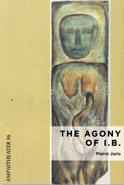Extreme temperatures fuel online hate speech
Relationship between temperature and hate tweets across five climatic zones in the USA
Press release by the Potsdam Institute for Climate Impact Research (PIK)
09/08/2022
- Online Hate speech increases when daily maximum temperatures are above or below a “feel-good window” of 12°C-21°C (54-70°F) – this is shown by the analysis of more than four billion tweets using statistics and AI methods
- Temperatures above 30°C (86° F) spur online hate across all climate zones and socioeconomic differences such as income, religious beliefs or political preferences, pointing to limits in what people can adapt to
- Conflicts in the digital sphere with implications for individuals’ mental health and societal cohesion are a yet underestimated climate impact
Temperatures above or below a feel-good window of 12-21 degrees Celsius (54-70 °F) are linked to a marked rise in aggressive online behaviour across the USA, a new study finds. Analysing billions of tweets posted on the social media platform Twitter in the USA, researchers from the Potsdam Institute for Climate Impact Research found hate speech increasing across climate zones, income groups and belief systems for temperatures too hot or too cold. This indicates limits to adaptation to extreme temperatures, and sheds light on a yet underestimated societal impact of climate change: conflict in the digital sphere with implications for both societal cohesion and mental health.
“Detecting hate tweets in more than four billion tweets from U.S. users with our AI-algorithm and combining them with weather data, we found that both the absolute number and the share of hate tweets rise outside a climate comfort zone: People tend to show a more aggressive online behaviour when it’s either too cold or too hot outside.”, states PIK scientist Annika Stechemesser, first author of the study published in The Lancet Planetary Health. “Being the target of online hate speech is a serious threat to people’s mental health. The psychological literature tells us that online hate can aggravate mental health conditions especially for young people and marginalized groups”, Stechemesser adds. “We see that outside the feel-good window of 12-21°C (54-70°F) online hate increases up to 12 percent for colder temperatures and up to 22 percent for hotter temperatures across the USA .”
The well-tempered tweet: Least hate tweets at 15-18 °C (59-65°F) across the USA
To arrive at these findings, the authors used a machine-learning approach to identify ca. 75 million English phrased hate tweets in a data set consisting of more than 4 billion tweets posted on Twitter in the USA between 2014 and 2020. To arrive at these findings, the authors used a machine-learning approach to identify ca. 75 million English phrased hate tweets in a data set consisting of more than 4 billion tweets posted on Twitter in the USA between 2014 and 2020. Subsequently, the authors analyzed how the number of hate tweets changed when local temperatures increased or decreased. In defining hate speech, the researchers were guided by the official UN definition: Cases of discriminatory language with reference to a person or a group on the basis of their religion, ethnicity, nationality, race, colour, descent, gender or other identity factor.
Across the USA, the authors found low levels of hate tweets in a ‘feel-good window’ of 12-21°C (54-70 °F); the minimum of hate tweets is reached for temperatures between 15 and 18°C (59-65°F) . Temperatures hotter and colder are linked to increases in hate tweets. The precise feel-good temperature window varies a little across climate zones, depending on what temperatures are common. Temperatures above 30°C, or 86 degrees Fahrenheit, are however consistently linked to strong increases in online hate across all climate zones and socioeconomic differences such as income, religious beliefs or political preferences.
This points to limits of temperature adaptation capability: “Even in high-income areas where people can afford air condition and other heat mitigation options, we observe an increase in hate speech on extremely hot days. In other words: There is a limit to what people can take. Thus, there are likely limits of adaptation to extreme temperatures and these are lower than those set by our mere physiological limits”, says Anders Levermann, head of Complexity Science at the Potsdam Institute, researcher at the Columbia University in the U.S., and co-author of the study.
The hidden climate impact: mental health
The consequences of more aggressive online behaviour can be severe as hate speech has been found to have negative impacts on the mental health of online hate’s victims. It can also be predictive of hate crimes in the offline world. “For centuries, researchers have grappled with the question of how climate conditions affect human behaviour and societal stability”, Leonie Wenz, working group leader at the Potsdam Institute who led the study, explains: “Now, with ongoing climate change, it is more important than ever. Our results highlight online hate speech as a new impact channel through which climate change can affect overall societal cohesion and people‘s mental health. So that means that curbing emissions very rapidly and drastically will not only benefit the outer world. Protecting our climate from excessive global warming is also critical to our mental health.”
Article: Annika Stechemesser, Anders Levermann, Leonie Wenz (2022): Temperature impacts on hate speech online: evidence from four billion tweets. The Lancet Planetary Health. [DOI: 10.1016/PIIS2542-5196(22)00173-5]
Weblink to the article: https://www.thelancet.com/journals/lanplh/article/PIIS2542-5196(22)00173-5/fulltext
Related research: In a previous paper, the researchers have found very similar results for Europe, too, cf. A. Stechemesser, L. Wenz, M. Kotz, A. Levermann (2021): Strong increase of racist tweets outside of climate comfort zone in Europe. Environmental Research Letters. https://doi.org/10.1088/1748-9326/ac28b3
For further information please contact:
PIK press office
Phone: +49 331 288 25 07
E-Mail: press@pik-potsdam.de
www.pik-potsdam.de
Who we are: The Potsdam Institute for Climate Impact Research (PIK) is one of the leading research institutions addressing relevant questions in the fields of global change, climate impacts and sustainable development. Natural and social scientists work closely together to generate interdisciplinary insights that provide a sound basis for decision-making for society, businesses and politics. PIK is a member of the Leibniz Association.

 “Interglacial Narrows (Poems 1915-2021)” Contra Mundum Press
“Interglacial Narrows (Poems 1915-2021)” Contra Mundum Press “Always the Many, Never the One: Conversations In-between, with Florent Toniello” Contra Mundum Press
“Always the Many, Never the One: Conversations In-between, with Florent Toniello” Contra Mundum Press “Conversations in the Pyrenees”
“Conversations in the Pyrenees” “A Voice Full of Cities: The Collected Essays of Robert Kelly.” Edited by Pierre Joris & Peter Cockelbergh
“A Voice Full of Cities: The Collected Essays of Robert Kelly.” Edited by Pierre Joris & Peter Cockelbergh “An American Suite” (Poems) —Inpatient Press
“An American Suite” (Poems) —Inpatient Press “Arabia (not so) Deserta” : Essays on Maghrebi & Mashreqi Writing & Culture
“Arabia (not so) Deserta” : Essays on Maghrebi & Mashreqi Writing & Culture “Barzakh” (Poems 2000-2012)
“Barzakh” (Poems 2000-2012) “Fox-trails, -tales & -trots”
“Fox-trails, -tales & -trots” “The Agony of I.B.” — A play. Editions PHI & TNL 2016
“The Agony of I.B.” — A play. Editions PHI & TNL 2016 “The Book of U / Le livre des cormorans”
“The Book of U / Le livre des cormorans” “Memory Rose Into Threshold Speech: The Collected Earlier Poetry of Paul Celan”
“Memory Rose Into Threshold Speech: The Collected Earlier Poetry of Paul Celan” “Paul Celan, Microliths They Are, Little Stones”
“Paul Celan, Microliths They Are, Little Stones” “Paul Celan: Breathturn into Timestead-The Collected Later Poetry.” Translated & with commentary by Pierre Joris. Farrar, Straus & Giroux
“Paul Celan: Breathturn into Timestead-The Collected Later Poetry.” Translated & with commentary by Pierre Joris. Farrar, Straus & Giroux